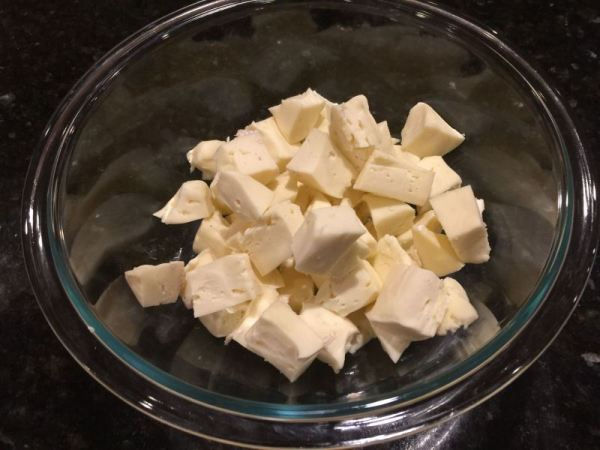Little bits of brie
- rosemarydearman1
- Jun 17, 2019
- 4 min read

"In the world of cheese, Brie is queen. It’s creamy, it’s rich and it makes everything it touches taste more delicious" Pure Wow
I don't normally include watermarked images, but this one is so great, and it's watermarked in a discreet way. I just hope they don't sue me.
Brie is gorgeous although I came to it rather late in life. It's one of those foods that just didn't appeal when young, and which I now love. And really I have to say that the best brie is in France. You have to eat it there because the best brie is made from unpasteurised milk and it doesn't travel well. We do make pretty good brie here too, but it probably doesn't compare with the real thing. Or maybe it does but I'm just not prepared to pay the price. In France it's commonplace, and cheapish. And mostly, here, it is made in small rounds not the larger flatter ones that you find in France. It's camembert that comes in the small rounds there, and I still don't like that. It's too strong for me.

Actually the best brie I remember tasting came from a hypermarket in France. It was cut from one of those big slender wheels and it was ever so slightly oozy and bouncy - like the one at right. It tasted of the milk, it was fresh, it was just lovely. Which is curious because I don't like drinking milk. I can't remember now whether it was a genuine Brie de Meaux like this one, (I think it was) but look, I remember it still, so it must have been good.
Brie comes from the Seine and Marne département of France, which is near Paris. Camembert comes from Normandy. It is made from cow's milk. I'll let Wikipedia tell you how it is made as it is a bit complicated for me:
"Brie may be produced from whole or semi-skimmed milk. The curd is obtained by adding rennet to raw milk and warming it to a maximum temperature of 37 °C (99 °F). The cheese is then cast into molds, sometimes with a traditional perforated ladle called a pelle à brie. The 20 cm (8 in) mold is filled with several thin layers of cheese and drained for approximately 18 hours. The cheese is then taken out of the molds, salted, inoculated with cheese culture (Penicillium candidum, Penicillium camemberti) or Brevibacterium linens, and aged in a controlled environment for at least four or five weeks.
If left to mature for longer, typically several months to a year, the cheese becomes stronger in flavor and taste, the pâte drier and darker, and the rind also darker and crumbly, and it is called Brie Noir (French for "black brie"). Around the Île-de-France where brie is made, people enjoy soaking this in café au lait and eating it for breakfast."
I have never seen the cheese dunking thing. And you really should eat the rind.
"it is this rind that is giving the cheese all the ooey-gooey goodness. This live rind breaks down the fats and proteins of a cheese, causing an increasingly creamy-to-runny texture over time." The Spruce Eats
I know the French like their camembert to be pretty runny but I'm not sure about brie - the implication from several sites was that if it was runny it was beginning to go off.
Brie de Meaux and Brie de Melun are the only appellation controlée bries. Which I guess is why the Australian makers of brie can call it brie.
Really you should just eat brie as it is, although there are lots of recipes out there for baked brie. But what I am talking about here is leftovers. Brie really needs to be eaten fresh, and so, even though we only usually buy small wedges or a small round it is rare that the whole thing gets eaten at once. We usually only buy it for parties and so little bits linger in the fridge. Because they go off a bit and so you don't like to serve them up to new guests a couple of weeks later. Currently I have several small and medium sized pieces in my fridge, so I thought I would look at what I could do with them.
Well the possibilities are virtually endless. Here is a gallery of some of them - from left to right and top to bottom: Brie, apple and onion tart, Brie, courgette and red pepper muffins, Cheeseboard and onion tart, Brie and cranberry twists, Apricot, brie and walnut stuffed chicken breasts. The last one is cranberry baked brie bites, but the link to the recipe didn't go anywhere, but really it looks pretty simple - I'm guessing pastry shells, a bit of brie and a couple of cranberries, then cook until the brie melts.
I think this particular selection shows my preference for tarts of some kind or another. But there are lots of other ways leftover brie can be used. Just type in leftover brie as your search statement and you will find heaps - or go to Taste.com and type in brie. I think there were nearly 200 recipes there. They range from the simple - toasted brie sandwich - to the complicated. Cranberries and mushrooms were common partners as well as onions of all kinds, cooked and raw. In fact there are so many options that I don't know where to begin. Maybe with the quiche.

























Comments